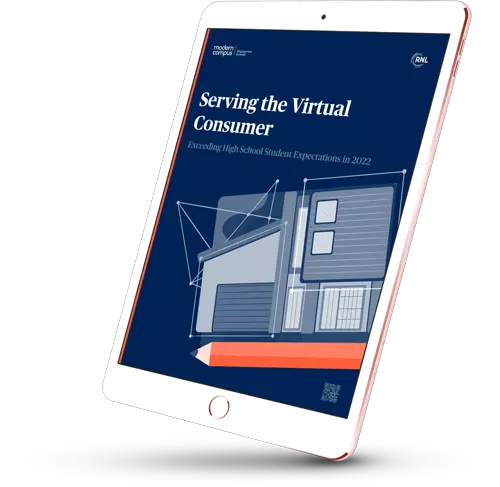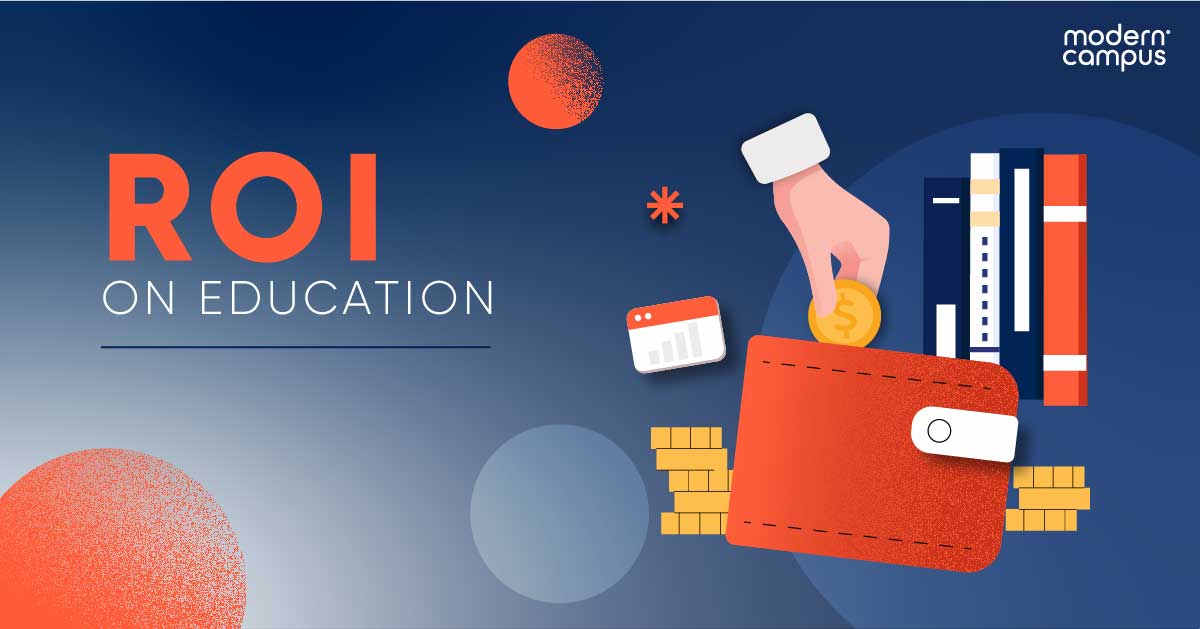Why and How to Show Students the ROI of Education
Pursuing a college degree isn’t the only pathway for Gen Z students when they leave high school.
A recent study developed by Modern Campus and based on research conducted in partnership with Ruffalo Noel Levitz (RNL) found that many high school students question the value of higher education—and aren’t convinced by its ROI.
While more than eight out of ten high school students said in our study they are committed to finishing college, half of them wonder if college is worth the investment. First-generation students are more likely to wonder if college is worth the time, money, and effort. They question whether college is the right path for them after high school.
The study, Serving the Virtual Consumer: Exceeding High School Student Expectations in 2022, tries to find an answer to the question: What do students want from college?
The study highlighted some trends that higher education leaders—especially those who manage curricula and academic catalogs—should pay attention to:
- 65% expect specific skills for the workplace from college
- 49% expect a job offer upon graduation
- 53% wonder if college is a worthwhile investment
- Top 3 most important topics for them when they look for colleges are
-
- academics,
- average cost, and
- financial aid
“College is expensive, and it doesn't make much economic sense to have a student find themselves while receiving higher education, like it used to be 50 years ago,” said Ann Buchele, Vice President of Academic Affairs and Workforce Education at Linn-Benton Community College in an interview with The EvoLLLution.
Ann’s perspective resonates with modern students and their skepticism towards the value of higher education.
Two things from the study are clear. First, students are basing their college decisions on course catalogs. And second, they’re prioritizing ROI.
Students understand college education is an investment and they prioritize return on their investment. The onus is on colleges to deliver that. By integrating career pathways in their course catalogs, colleges can:
- Show students the ROI of education upfront
- Show them the career pathways
- Show them their education journeys
- Make it easy for them to visualize and choose courses
“Students really can’t afford to meander for years. With guided pathways, someone is there to work with them and help make connections to a path laid out for them. It really helps meet the student’s needs.” Said Buchele.
How colleges can show students the ROI of education?
Seeing a return on investment is exactly what students want before committing to a course or degree programs at any institution. They need to know that their credentials will get them a job or keep them on their career path. It’s important for high school graduates to have insight into the job outcome their education provides, and career pathways are the solution.
Chris Young, Assistant Director for Web and Digital Marketing at the University of Central Missouri, said in an interview with The EvoLLLution that his institution was addressing this need by adopting Modern Campus Pathways.
“We’re delivering something to our students. We have to think about what they’re going to do with it and why they want it in the first place,” Young said. “The Modern Campus Pathways solution considers the student’s pain point. What does the student (the consumer) want? A satisfying career.”
With Career Pathways, colleges and universities make the connection between education and career clear for students before they start their education journey. The relationship is kicked off by college showing the student that it’s not just about what it’s going to teach them, but by helping them see what they’re going to take away from their experience.
Young said the college website and catalog should serve as marketing tools that respond to student needs and highlight the benefits of a course—rather than just talking about the course itself.
“An 18-year-old choosing between different institutions will not necessarily look at a program and immediately understand the career paths the program opens up,” he said. “They’re possibly looking at dozens of institutions and trying to find one that fits.”
“If the website—the center of the university’s marketing efforts—can’t clearly identify the benefits associated with a given course or program, will the prospective student value that program as highly as the next website down the way that clearly ties all those pieces together for them and tells a story?” he adds.
Similarly, Melony Martinez, Director of Marketing and Public Relations at National Park College said that making accurate career data available is essential to meeting learners’ expectations.
“If a student comes to your site and they're looking to explore degree paths or career opportunities, and they're not able to find that, then you failed,” she said in an interview with The EvoLLLution. “Modern Campus Pathways is going to help us meet student expectations in a number of ways, through the Job Outlook data generated from the Bureau of Labor statistics, and through the degree search and program search offerings students can access.”
Want to deliver what modern students expect from your institution?
Leveraging Career Pathways to make career outcomes better visible to students is essential to delivering on student expectations. To learn more about what students want, read the full study here.

Last updated: May 1, 2023




